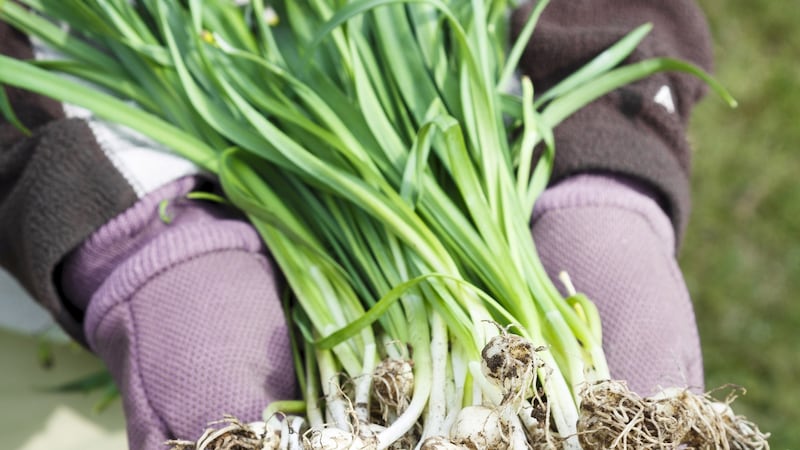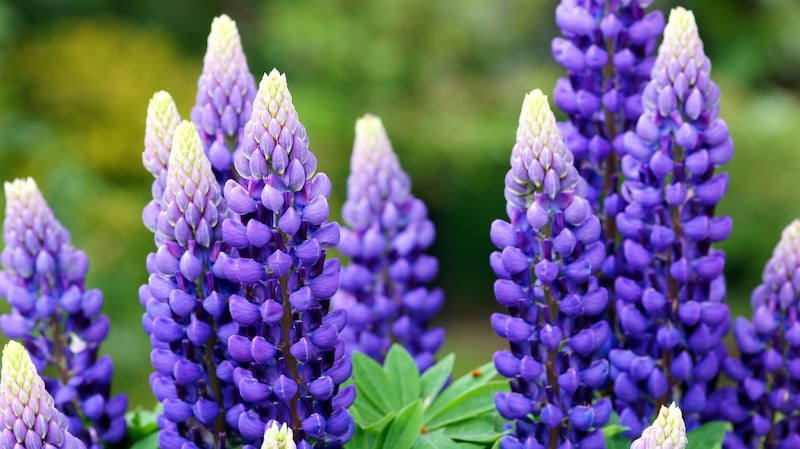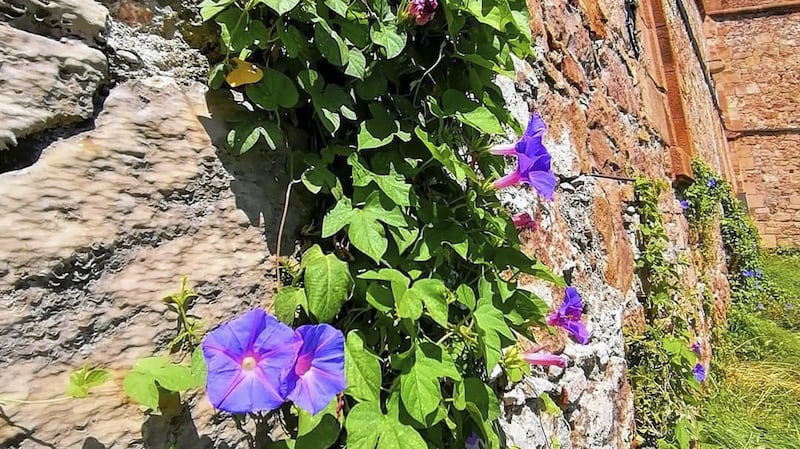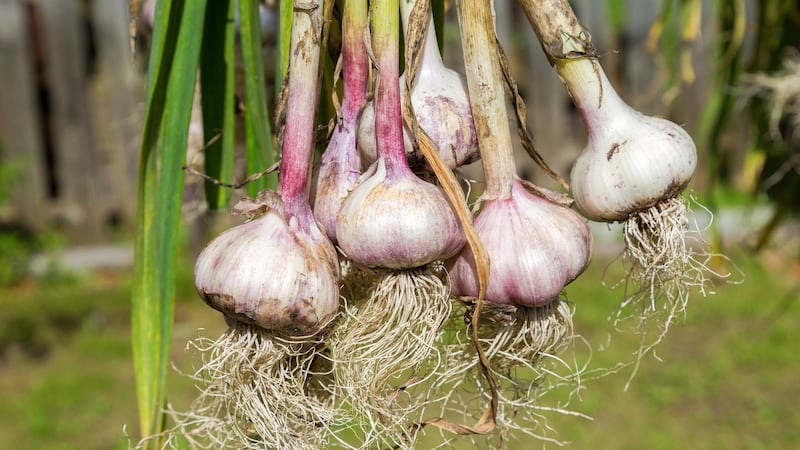1: Sow hardy annuals
Late March/early April is an excellent time of the year to sow many different kinds of hardy annuals including pot marigolds (calendula); honeywort (cerinthe); bishop’s flower (ammi); love-in-a-mist (nigella); poached-egg plant (limnanthes); gypsophila; orlaya grandiflora; larkspur (consolida); and corn cockle (agrostemma).
As hardy annuals, all of these can technically be sown directly into their final growing position or into a well-prepared seed bed outdoors. But, with the exception of nigella (which dislikes being transplanted), I personally prefer to sow them into pots or cell trays under cover for transplanting outdoors in late spring. In this way I can give them ideal conditions for optimum germination/growth, more easily protect their tender young leaves from slug damage and prevent the tiny seedlings from being overwhelmed by a flush of fast-growing, freshly-germinated weeds.
There’s also still time (but hurry) to sow seed of sweet pea (another hardy annual). And if you’ve already propagated the latter from seed sown last autumn or earlier this year, then now is the best time to plant the young transplants outdoors into their final planting spot in the garden.
2: Mow the lawn
As long as the ground is firm underfoot, late March is a great time to start revitalising winter-weary lawns. Always choose a bright, dry day to give grass its first few gentle cuts of the year, making sure to first adjust the lawnmower blades to the highest setting to allow the sod to become gradually accustomed to being mown again after the winter lull. For a super-sharp look, clip the edges with a long-armed lawn shears or if they’re very unkempt, then use a half-moon or a sharp garden spade to neaten them up before mowing.
When cutting lawns at this time of year, take special care not to accidentally mow down the foliage of any spring-flowering bulbs such as snowdrops, narcissus crocuses and cyclamen; these need to be allowed to die down naturally so that they can flower again next spring. If the grass is too long to cut with a mower, then use a strimmers, shears or scythe to gently top it. Make sure to keep the blades high for the next couple of cuts before gradually reducing them to the lawn’s normal mowing height, at which point it’s a good idea to scarify your lawn by vigorously raking it to remove any moss or “thatch” (dead growth).

3: Don’t mow the lawn
Alternatively, don’t mow your lawn at all this spring (or just mow a narrow path through it or mow it much less frequently), a very simple, nature-friendly way to gradually establish a native wildflower patch filled with pretty, pollinator-friendly blooms that will provide nectar and pollen for visiting bees and other insects.
Bear in mind that dormant seed of many different kinds of native wildflowers is naturally contained within most soils as part of what’s called its seedbank. Every soil’s seedbank is a unique, genetically diverse expression of its history of cultivation and its natural growing conditions. So there’s no need to buy seed. Instead, by simply not mowing the grass you’re giving that unique seedbank the opportunity to properly express itself. For more information, see pollinators.ie.

4: Lift snowdrops
March/April, just after their dainty, bell-shaped white flowers have faded but before their foliage has yellowed, is the very best time of the year to lift, divide and replant established clumps of snowdrops, a technique known as planting “in the green”. Use a garden fork to gently lift these established clumps, making sure to avoid damaging their bulbous root systems before teasing each clump into smaller sections. Then transplant it to the same depth in its new position in the garden and finish off with a generous watering (use a label to mark its position so you don’t forget).
Snowdrops like a free-draining but moisture-retentive soil beneath the dappled, seasonal shade of deciduous trees and shrubs, or at the edge of a border or grassy bank. They will also grow happily in pots, tubs, window boxes and troughs as long as the soil isn’t allowed to dry out.
5: Plant chitted potatoes
The second half of March traditionally marks the beginning of the potato planting season, starting with fast-growing early varieties such as Colleen, Vitabella, Orla and Alouette that should be chitted/pre-sprouted before being planted at a spacing of 25cm between tubers and 50cm between rows, and at a depth of 15cm into a fertile, free-draining, weed-free soil in a sunny, sheltered spot that has been enriched with well-rotted organic matter.
For best results, pre-warm the soil before planting by temporarily covering it with a sheet of strong black plastic or with a couple of layers of horticultural fleece (make sure to secure these against winds). Covering the soil with fleece after planting will also boost growth and help protect the emerging shoots from any damaging late frosts. But hold off planting main crop varieties until mid-April.

6: Propagate perennials
This is an excellent time to sow seed of many different types of perennials – examples include lupins, achillea, echinacea, agastache, aquilegia, linaria, verbena, rudbeckia and delphinium. For best results, sow seed under cover and with gentle heat, using a good-quality seed compost top-dressed with a fine layer of vermiculite. March is also a good time to propagate many clump-forming herbaceous kinds by lifting and dividing them. Examples of perennials that can be propagated in this way include crocosmia, dierama, hosta, stachys, monarda, phlox, hemerocallis, heuchera, helianthus, astrantia, delphinium and geranium as well as many species of ornamental grasses.
To do this, use a garden fork or spade to lift established clumps and then use a spade, a sharp garden knife or two garden forks stuck back to back into the centre of each clump to separate them into smaller sections. Plant these divisions quickly into their new growing positions or pot them on before finishing off with a generous watering.

7: Try Jerusalem artichoke
Organic gardening expert and author Klaus Laitenberger recently singled out the sunchoke or Jerusalem artichoke (Helianthus tuberosus) as his all-time favourite vegetable, describing it as "high yielding, easy-to-grow, incredibly nutritious and packed full of health-boosting properties".
Not a true artichoke but actually a member of the sunflower family, this ultra-productive root vegetable is grown in a very similar way to potatoes with its fleshy tubers planted outdoors in spring. A very tall-growing plant (up to 3 metres tall), it likes a sunny spot and a fertile, free-draining soil but will also grow very well in less-than-ideal growing conditions. Recommended stockists of tubers include fruithillfarm.com and good Irish garden centres.

8: Sow half-hardy climbers
For a vibrant, vertical display of summer colour against a sunny, sheltered wall or pergola or to liven up a bright porch or conservatory this summer, sow seed of some fast-growing half-hardy climbers. Suitable examples include the morning glory vine (Ipomoea); the Chilean glory vine (Eccremocarpus scaber), black-eyed Susan (Thunbergia alata) and Tropaeolum peregrinum. Sow seed with bottom heat and under cover, for pricking out into individual small pots and then transplanting the young plants into their final growing positions in very late spring.

9: Give herbs a go
Mild March days can easily trick us into thinking it’s time to start direct-sowing vegetable and herbs seed outdoors. But with a few notable exceptions (see below), it’s generally best to hold off for another few weeks to protect the emerging baby seedlings from late spring frosts.
Instead, a lot can be started off as seed sown under cover in trays or pots and placed in a cold frame, unheated glasshouse, polytunnel or on a few bright windowsills indoors. Suitable examples include coriander, chervil, parsley, borage, dill, fennel, beetroot, cabbage (late spring, summer and red types), cavolo nero kale, Swiss chard, lettuce, leeks, scallions, radishes and baby leaves.

10: Direct-sow onions
A few ultra-hardy vegetables can be sown directly outdoors at this time of year, including onions, shallots and garlic. All are members of the onion family, so give them a fertile, free-draining, weed-free soil enriched with a light dressing of very well-rotted garden compost/garden manure plus a sprinkle of wood ash/powdered seaweed and a sheltered position in full sun.
To save on time-consuming weeding later in the growing season, it’s a good idea to plant all of these into mypex or black plastic; just stretch the sheet tautly across well-prepared, gently firmed soil and secure it in place by burying the edges or weighing them down with soil/stones, then pre-burn/cut the planting holes to the correct spacing before planting the baby sets/cloves into it. Recommended varieties suitable for spring planting include Sturon, Boga, Centurion (onions), Red Sun and Golden Gourmet (shallots) and Cristo and Marco (garlic).



















